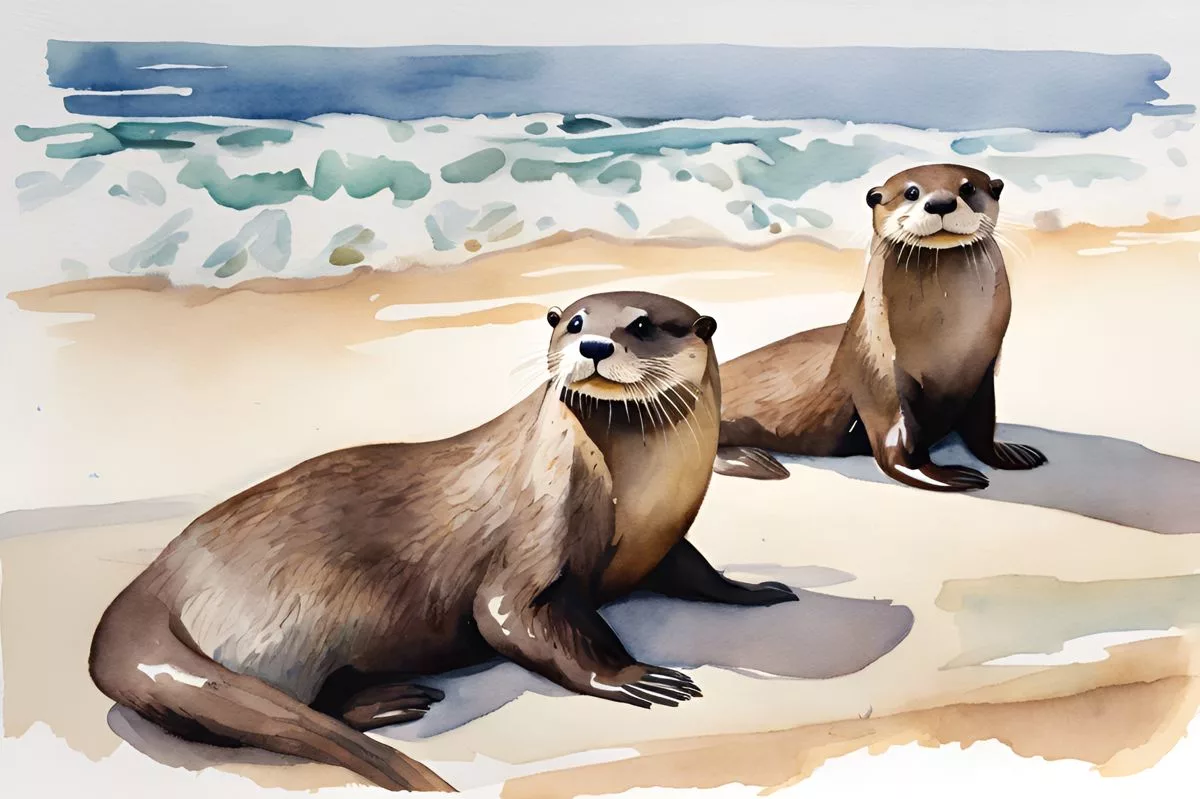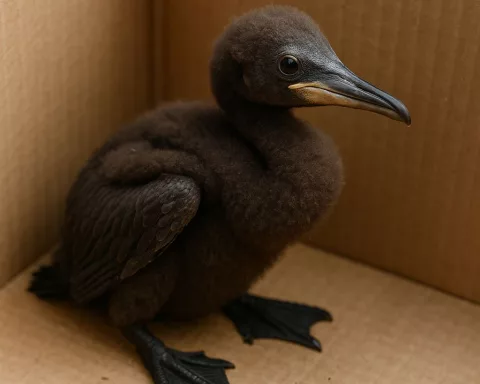Despite the increase in sightings, their overall population is decreasing, and they have been classified as ‘near threatened‘, highlighting the urgent need for their conservation. Cape clawless otters are a remarkable species of otters found in Cape Town, South Africa. They are adorable and playful creatures, but it’s important to watch and appreciate them from a safe distance as they are wild animals. The Cape clawless otters enhance Cape Town’s rich natural heritage, and their charm has even inspired the iconic Otter Trail hiking pathway.
What are Cape clawless otters in Cape Town?
Cape clawless otters are a remarkable species of otters found in Cape Town, South Africa. They are the second-largest freshwater species and have both nocturnal and diurnal behaviors. Despite the increase in sightings, their overall population is decreasing, and they have been classified as ‘near threatened.’ The Cape clawless otters enhance Cape Town’s rich natural heritage and require urgent conservation efforts.
Cape Town, a diamond of South Africa, boasts of a plethora of attractions that draw tourists from all corners of the globe, particularly during the warm summer season. Its idyllic beaches are admired by many, however, another group of beach lovers have recently emerged – the delightful Cape clawless otters.
Unexpected Beachcombers
On a recent summer day, an otter family took advantage of the city’s vibrant beauty and transformed a regular day into an epitome of a Capetonian beach day. They chose the scenic Camps Bay area to bask in the sun, frolicking in the shallow waters near a boulder-surrounded cave on the beach. Thanks to Andrew Hofmeyer’s keen eye, he captured and shared this adorable encounter, enchanting internet users with the otters’ charming behaviors.
The Cape clawless otters, their cuteness unsurpassed, are no doubt contenders on the world’s top 50 endearing animals list. Nonetheless, it’s important to note that they’re wild animals. Their inherent survival instincts can trigger aggression if they feel endangered. It’s recommended to watch and appreciate these creatures from a safe distance, and if you’re walking a dog, keep it leashed.
Cape Clawless Otters: Remarkable Creatures
The Cape clawless otter, also known as the African clawless otter (Aonyx Capensi), is a fascinating creature, surprisingly large with both nocturnal and diurnal behaviors. It’s the second largest freshwater species, only second to the South American otter, according to Humane Society International/Africa (HSI/Africa). In recent years, sightings of these otters along the shores and bodies of water in the Western Cape have seen a steady increase.
Unfortunately, the overall population of Cape clawless otters is experiencing a decrease, despite the increase in sightings. In 2014, the International Union for Conservation of Nature (IUCN) classified these otters as ‘near threatened’, thus highlighting the urgent need for their conservation.
An Odic Tribute
On a brighter note, did you know that these charming creatures have a trail named in their honor? The globally recognized Otter Trail, which is the oldest hiking trail in South Africa, celebrates these playful creatures. Established in 1968, the iconic 40-kilometer pathway meanders along the coast between the Storms River mouth and Nature’s Valley. It’s common for hikers to spot the Cape clawless otter having fun in the streams and estuaries along the South African coast.
With its awe-inspiring beauty and diverse wildlife, Cape Town continues to captivate both visitors and residents. As part of this city’s natural residents, the Cape clawless otters enhance Cape Town’s rich natural heritage, serving as a testament to the city’s dedication to safeguarding and conserving its exceptional biodiversity.
What is the status of Cape clawless otters in Cape Town?
Despite the increase in sightings, the overall population of Cape clawless otters in Cape Town is decreasing, and they have been classified as ‘near threatened’ by the International Union for Conservation of Nature (IUCN).
What precautions should you take when observing Cape clawless otters in Cape Town?
It is important to watch and appreciate Cape clawless otters from a safe distance, as they are wild animals that can become aggressive if they feel endangered. If you are walking a dog, it is recommended to keep it leashed.
What is the Otter Trail?
The Otter Trail is a 40-kilometer hiking pathway along the coast between the Storms River mouth and Nature’s Valley in South Africa that was established in 1968. It is the oldest hiking trail in South Africa and celebrates the playful Cape clawless otters.
Why are Cape clawless otters remarkable creatures?
Cape clawless otters are the second-largest freshwater species and have both nocturnal and diurnal behaviors. They enhance Cape Town’s natural heritage and require urgent conservation efforts.
Where can you spot Cape clawless otters in Cape Town?
Cape clawless otters can be spotted along the shores and bodies of water in the Western Cape and in the streams and estuaries along the South African coast.
How can we contribute to the conservation of Cape clawless otters in Cape Town?
We can contribute to the conservation of Cape clawless otters by supporting conservation efforts and spreading awareness about the need to protect these remarkable creatures and their habitat.












